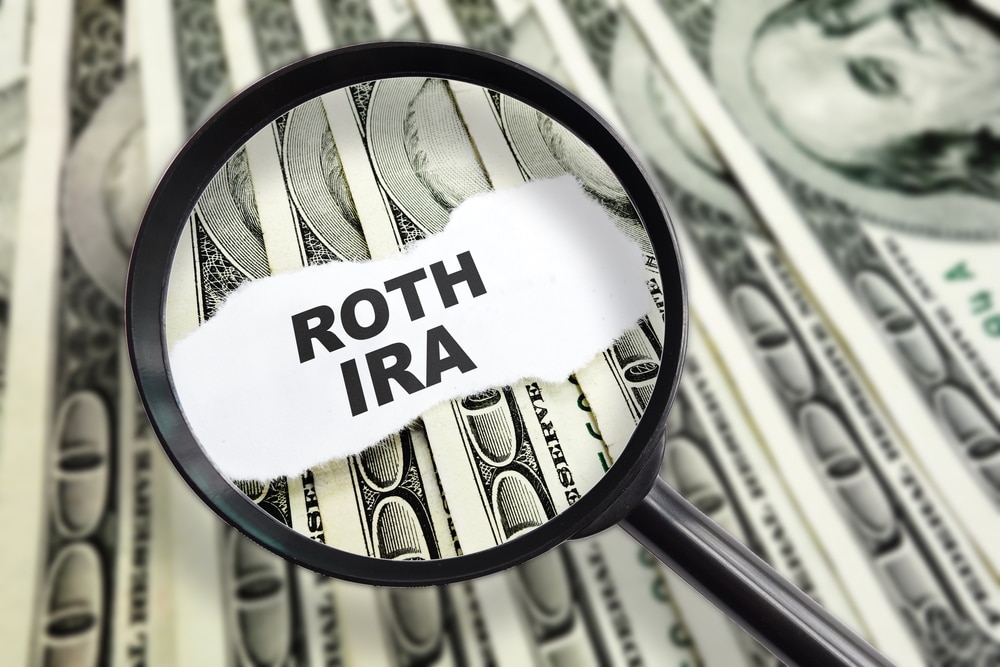A Roth Individual Retirement Account (IRA) is a savings plan that allows individuals to grow their retirement investment portfolio without having to pay taxes on gains during the investment period and during withdrawals.
As per the legal guidelines for Roth IRA, persons who have owned the account for at least 5 years and are at least 59.5 years old have the right to tax-free withdrawals.
Who qualifies for a Roth IRA?
For one to qualify for a Roth IRA, they need to meet the following criteria:
Income threshold: A contributor’s modified adjusted gross income (MAGI) should not exceed $140,000 for a single person and must be below $208,000 for married couples in 2021. These figures keep changing, so ensure you get the correct figures for the corresponding year.
Taxable income: You must have a stream of income from which federal taxes are deducted. If you have income, you have a ceiling of $6,000 in contribution, which can rise to a maximum of $7,000 for persons above 50 years old.
How Roth IRA is managed
Individuals are free to decide on how much to contribute towards their Roth IRA account. In addition, they also have a free hand in choosing where to invest their money. But that’s how far freedom goes.
Contributions are managed by a licensed custodian, who determines how they are invested. In most cases, the custodian will either be a brokerage firm, an investment bank, or a mutual fund company.
The custodian will also ensure that your investment complies with the relevant IRA regulations, including the filing of the applicable reports. Contributors are free to switch their investments from one custodian to another whenever they lose confidence in them. You also have the right to shift your Roth IRA account to their preferred account manager.
Advantages of Roth IRAs
- Savings on taxes: Roth IRA offers contributors the chance to make savings on taxes if tax rates rise in the future, relative to current taxes.
- Convenience during withdrawals: Contributors’ withdrawals are not subjected to tax deductions regardless of the time of withdrawal. However, withdrawals from investment earnings may be taxed.
- Freedom to have 401 (K): According to rules governing Roth IRA, contributors can contribute to their account and also have a 401 (K) plan simultaneously.
- Flexibility: If you meet the conditions discussed above, you can start to contribute yearly or stagger your contributions in tranches of monthly payments.
- Convenient contribution timeline: Contributors have a relatively long time within which to send contributions. They have up to the next tax filing deadline to contribute for the current year.
- Tax-free distributions. Contributors who have had a Roth IRA account for at least five years and are 59 and a half years old or more enjoy tax-free distributions on their savings and earnings.
- Free for all ages: Anyone with an income has the right to contribute to a Roth IRA regardless of how old they are.
- No restrictions on required minimum distribution: Roth IRA can be distributed in whichever manner preferred by a contributor, unlike 401 (K) plan once one hits 72 years.
Guidelines for withdrawing from Roth IRA
Roth IRA contributors enjoy tax-free withdrawals from their accounts in later stages because of earlier deductions. However, they have the option of withdrawing early and paying a ten percent penalty.
You can withdraw at any age, but your savings will be fined if your account was less than five years old and you were aged less than 59.5 years at the time of withdrawal.
However, penalties will not be applied to persons who are less than 59.5 years old, provided that they meet the following conditions:
- You have been operating the account for at least five years.
- If you are withdrawing to construct or buy your first home, you will be allowed to withdraw up to $10,000.
- If the money is meant for use in qualified disability needs.
- In case of the death of the contributor, the next of kin can withdraw the funds.
Also, you will not be penalized but will pay applicable taxes under the following circumstances:
- If you need the money to go towards paying for your medical needs
- When you need the money to cater to higher education, you need to meet certain criteria.
- You need the money to pay for your medical insurance premium while employed.
Comparisons with traditional IRA
Similarities
Roth IRA and traditional IRA have the following things in common:
- Both are practical and effective means of saving for post-retirement life. They offer a reliable safety net upon leaving one’s job.
- Both are not supported by employers’ contributions. Contributors open these accounts of their own volition, with their preferred financial institutions.
- Both plans have a ceiling for maximum allowable annual contributions. These are capped at $6,000 or a maximum of $7,000 for persons who join when they are 50 years or older.
Differences
- You cannot have a Roth IRA if you earn beyond a certain amount of money annually. This is not the case with traditional IRA.
- For traditional IRA, there is a requirement for a certain minimum distribution of investments but this isn’t the case with Roth IRA. In addition, contributors can withdraw money at any age without attracting penalties provided that they meet certain conditions.
Is Roth IRA a good fit for you?
Roth IRA would be a good choice for you based on the following considerations:
- Roth IRA would be good for you if you do not have an employer-sponsored 401 (K) plan. You can also go for Roth IRA if your contributions to the 401(K) plan have already reached the allowable limit.
- Roth IRA would be a good choice if you fall within a low tax bracket. However, if your income puts you in a higher tax bracket, then shifting to a traditional IRA is a better choice because Roth IRA taxes are deducted at the source.
In addition, Roth IRA is a good option for persons who get tax refunds from the IRS or if you anticipate that taxation for your income bracket will be higher in the future.
- Early-career individuals should get a Roth IRA because of the relatively low taxes that they have to pay and because they will likely pay higher taxes on their incomes as they climb the career ladder. They should therefore take advantage of early-career tax reliefs.
- A Roth IRA is a good choice if you intend to work past 72 years. This is because individuals are allowed to contribute to Roth IRA for as long as they wish, while traditional IRA contributions are only accepted up to 72 years.
Bottom line
Roth IRA is an effective way to save for one’s retirement while reducing the tax burden. You should evaluate its strengths and weaknesses based on your income level and your age, as well as the amount of time you intend to spend working. It also offers contributors more freedom than 401 (k), but with Roth IRA, you can get the best of both.

